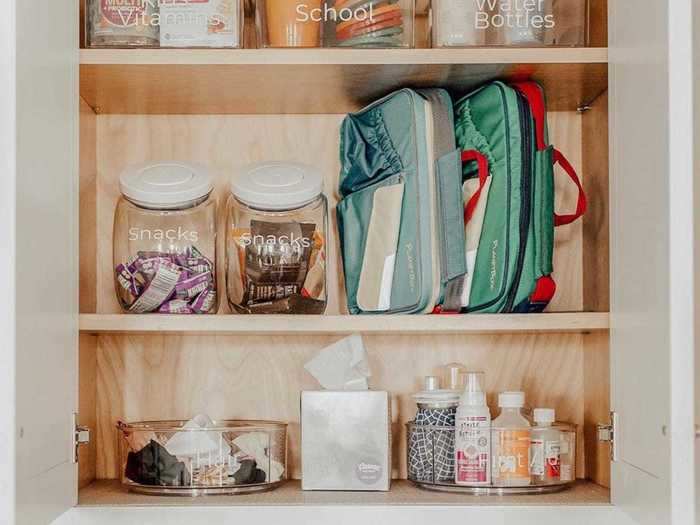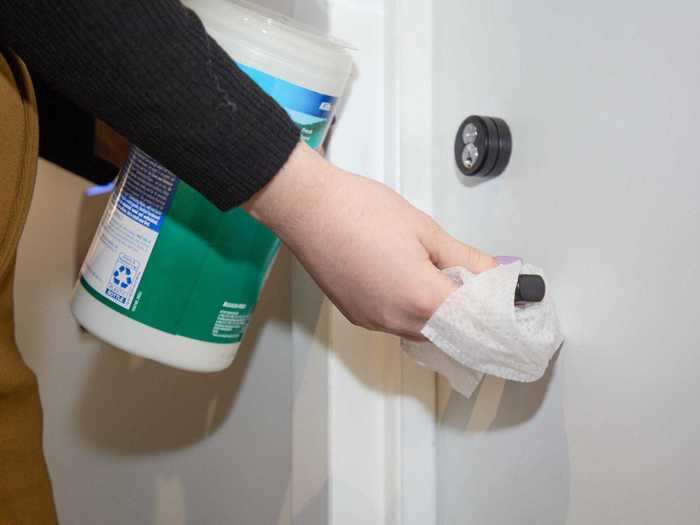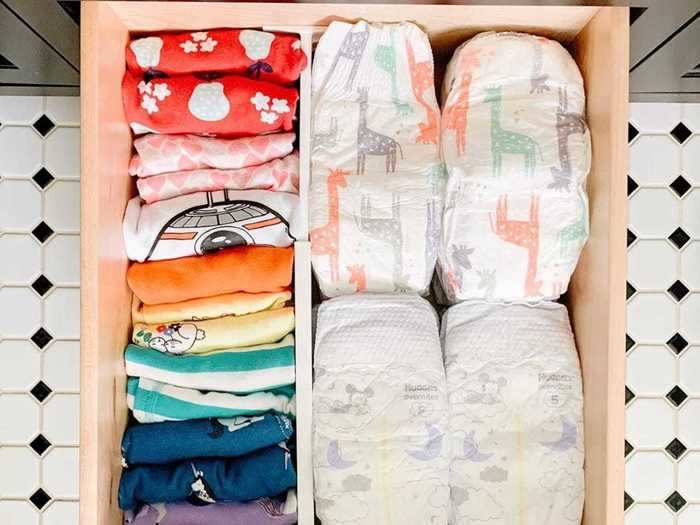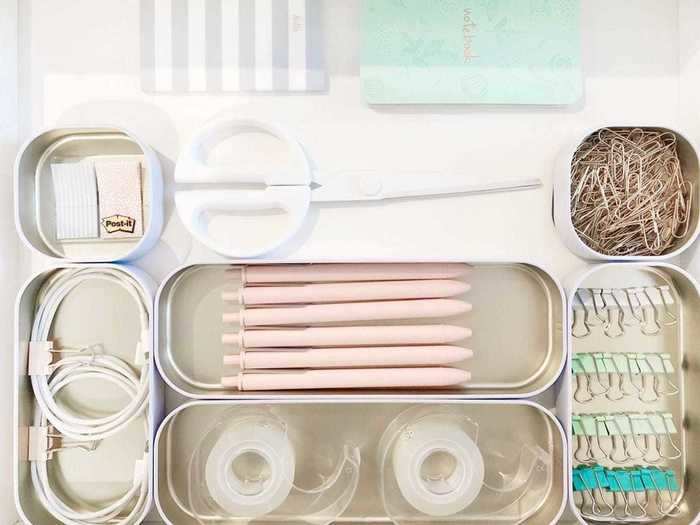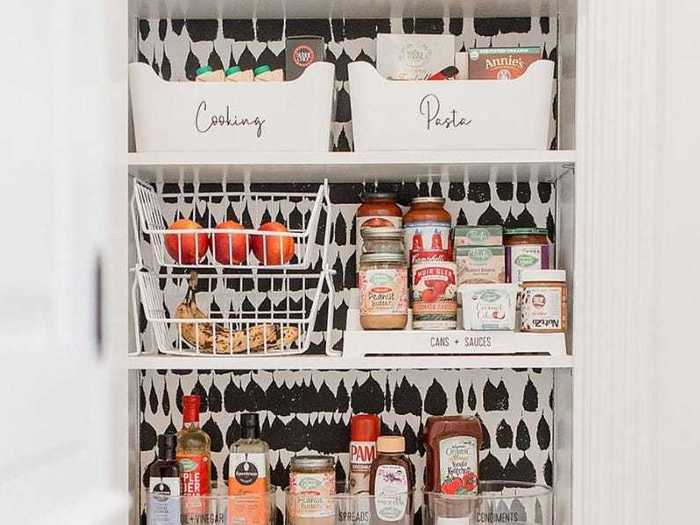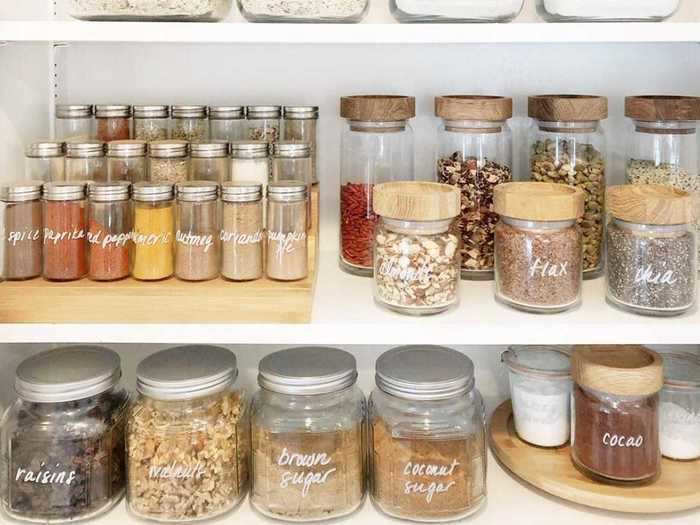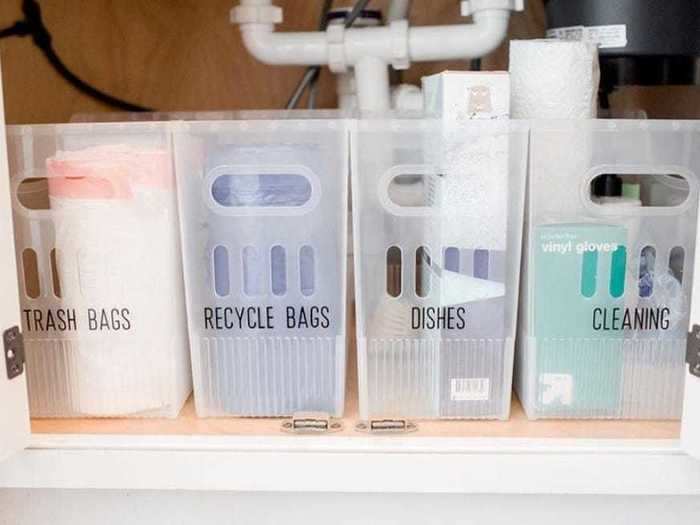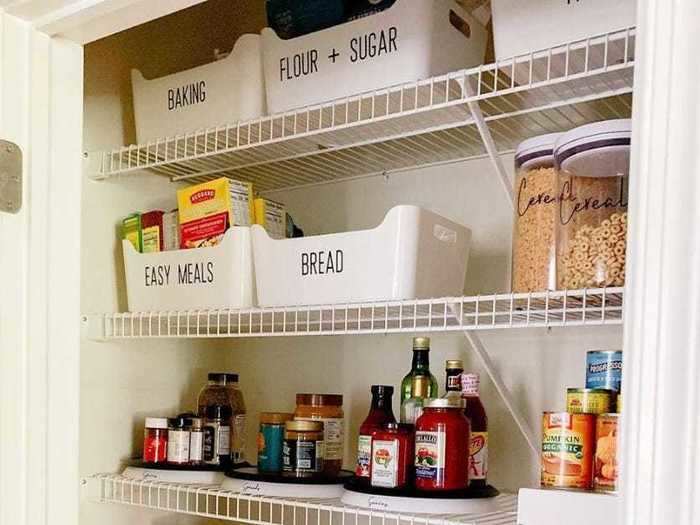Recycling glass jars for dried food storage and putting items in rainbow order are easy ways to organize with what you already have.Holly Blakey, Breathing Room Organization; Melissa Groff, Namastay Organized
- Experts are urging many people to stay at home and avoid large crowds as a way to help curb the spread of the coronavirus in the US.
- That being said, some people are finding themselves with more free time at home.
- Decluttering and cleaning can be a productive way to spend time while engaging in social distancing.
- Insider spoke with professional home organizers, who shared easy tips for creating photo-worthy pantries and cabinets without buying new storage items or products.
- Visit Insider's homepage for more stories.
As more people in the US practice social distancing by staying at home and avoiding large gatherings amid the coronavirus pandemic, some people are finding themselves with some extra downtime around the house.
While there's nothing wrong with diving into a good book, watching "Love Is Blind" on Netflix, or trying out a virtual tour of an art museum, more time spent at home might be the perfect opportunity to clean out closets, pantries, and other cluttered spaces.
Insider gathered expertise from two home organizers — Holly Blakey of Breathing Room Organizing and Styling, and Melissa Groff of Namastay Organized — about easy ways to organize without leaving the house to buy new bins, supplies, or other storage products.
Read the original article on
Insider
Don't fret if some closet or pantry items are loose — just keep a running list of organizational tools you might find helpful in the future.
Don't worry if not every item has a labeled box or container immediately.
Melissa Groff, Namastay Organized/Instagram
Groff said that making do with supplies already at home can be a positive thing for figuring out the best organizational system.
She explained that simply living in and getting used to a newly organized space is an important part of the process of decluttering — and that it's best to not buy a ton of new containers or storage bins until after you've figured out what you actually will use.
"Keep a list of things that might help you add some functionality later, like a turntable or bin with a handle," Groff said. "You don't need to purchase them right away, and using the space for a little while will help narrow down the must-haves from the wants."
As always, empty shelves and cabinets deserve a deep clean, which can be achieved using already-purchased products.
Disinfecting wipes are a cleaning product that most people keep on hand.
Crystal Cox/Business Insider
Whether in the middle of a public health situation or not, it's a smart idea to give spaces (both those that are frequently touched, and places that might not be cleaned often) a good scrub using cleaning products you already have.
Especially in kitchen pantries and cabinets, "food bits can hide under your stuff and linger," Groff said.
"Wipe down shelving, sweep up crumbs, and give the space a quick vacuum," she added.
Organizing items by color is a cost-effective way to tidy up a space.
Here, Groff organized children's clothing in rainbow order.
@NamastayOrganized/Instagram
Speaking to arranging clothes in a closet, Blakey is a firm believer in organizing by color.
She recommended people organize by color "within each category: blouses and tops, sweaters, jackets, dresses, pants, and so on."
Blakey continued, suggesting people find a color theme that speaks to them.
"Whether you like the ROYGBIV trend, or darks to lights, stick to a theme. This alone will give you the closet 'wow' you're looking for," she said.
Use tins and jewelry boxes to create makeshift dividers in cluttered drawers.
A desk drawer organized by Blakey.
Holly Blakey, Breathing Room Organization/Instagram
Blakey said that while tins or tiny boxes used in drawers or cabinets don't necessarily have to be the same shape or size, sticking to one color, if possible, can create a cohesive look.
"Use what you have, but try to keep a color theme," she said. "Everything looks better if the containment is a similar color."
Decorate otherwise bland drawers or cabinets with gift-wrapping paper.
Groff showed how a fun background can give a pantry personality.
@NamastayOrganized/Instagram
Printed contact paper is also an option, but if it's not accessible, wrapping paper or other decorative paper can add life to the back of a bland cabinet, pantry, or closet, or even the inside of drawers.
Decant nuts, pasta, and other dry foods in spare clear jars.
Take it a step further by using a wipeable marker to label the clear glass jars.
Holly Blakey/Breathing Room Organization, Instagram
Blakey suggested giving empty pasta sauce jars or similar clear containers a new purpose.
"Use any glass canning jars or recycled glass jars to decant and store items like nuts, seeds, and dried fruit," she said. "Everything looks prettier in glass jars, and it's easy to see what's in them. Don't worry if they're all different sizes."
Use masking tape, permanent markers, or even Post-It notes to create labels.
Organizational labels don't have to be printed with a special machine.
@NamastayOrganized/Instagram
"Use a Sharpie and some Scotch tape to label," Groff said. "You don't need a fancy label maker to make sure you label where items belong. If you don't have tape, Post-It notes or painter's tape will accomplish the same thing."
Blakey recommended using extra gift labels to mark storage bins.
"Tie [gift labels] around an opening in the bins, or around the top of jars. It's like you've given yourself the gift of organization," she said.
Clearing shelves and closets to take inventory is a necessary first step and costs virtually nothing.
A neat pantry organized by Groff.
@NamastayOrganized/Instagram
Blakey and Groff both stressed the importance of simply clearing out cabinets and closets and sorting the existing items.
"In every client's pantry I organize, there are always numerous items that are expired or never used. Toss the expired items, whether by emptying contents into disposal or compost, or recycling, and deliver unused items to a food donation bank or local shelter," Blakey said.
Groff suggested sorting items, whether in a bedroom closet or a kitchen cabinet, into categories.
"This is your time to reevaluate where you have been keeping things," Groff said. "Think of your kitchen as 'zones,' and group items of the same category together. That way, when it's time to bake a cake, all the materials that you need to do so are together."

